Premium Only Content
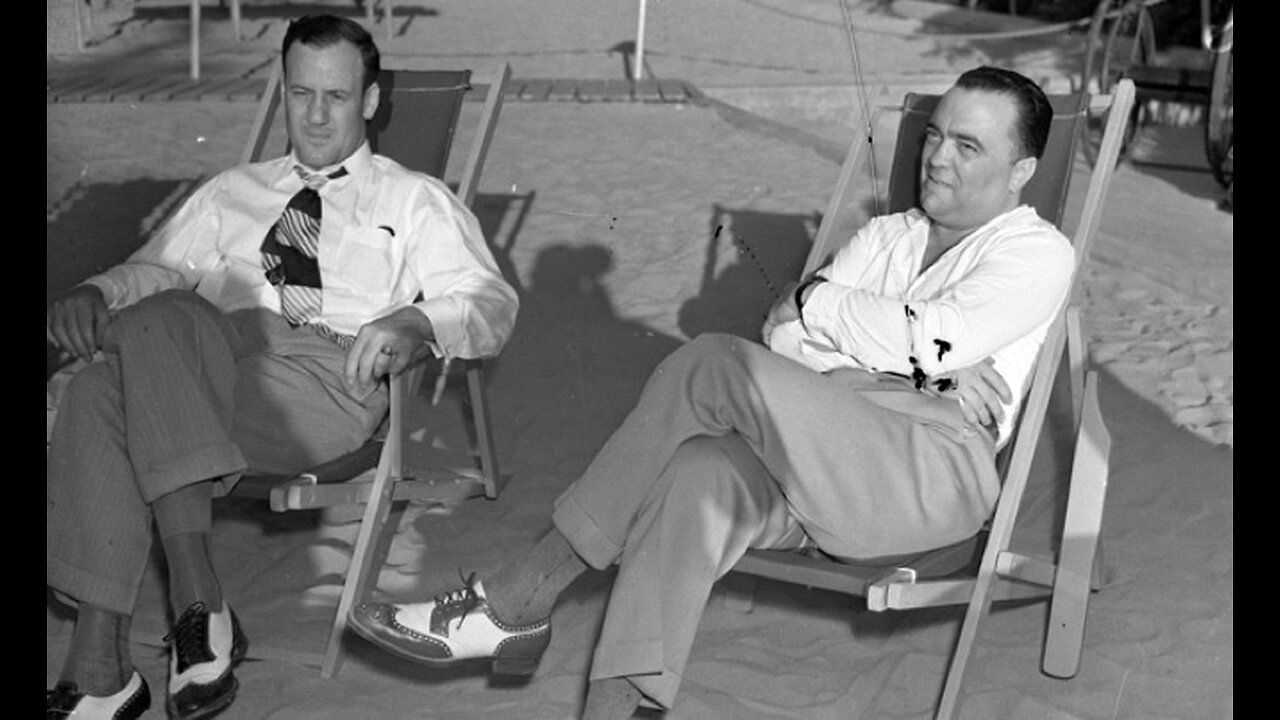
FBI Historian John Fox on J. Edgar Hoover (2012)
John Edgar Hoover (January 1, 1895 – May 2, 1972) was an American law enforcement administrator who served as the final Director of the Bureau of Investigation (BOI) and the first Director of the Federal Bureau of Investigation (FBI). President Calvin Coolidge first appointed Hoover as director of the BOI, the predecessor to the FBI, in 1924. After 11 years in the post, Hoover became instrumental in founding the FBI in June 1935, where he remained as director for an additional 37 years until his death in May 1972 – serving a total of 48 years leading both the BOI and the FBI under eight Presidents.
Hoover expanded the FBI into a larger crime-fighting agency and instituted a number of modernizations to policing technology, such as a centralized fingerprint file and forensic laboratories. Hoover also established and expanded a national blacklist, referred to as the FBI Index or Index List.
Later in life and after his death, Hoover became a controversial figure as evidence of his secretive abuses of power began to surface. He was also found to have routinely violated both the FBI's own policies and the very laws which the FBI was charged with enforcing, to have used the FBI to harass and sabotage political dissidents, and to have extensively collected information on officials and private citizens using illegal surveillance, wiretapping, and burglaries.[2][3][4][5] Hoover consequently amassed a great deal of power and was able to intimidate and threaten high-ranking political figures.[6][7]
Early life and education
Dickerson Naylor Hoover
Hoover was born on New Year's Day 1895 in Washington, D.C., to Anna Marie (née Scheitlin; 1860–1938) and Dickerson Naylor Hoover (1856–1921), chief of the printing division of the United States Coast and Geodetic Survey, formerly a plate maker for the same organization.[8] Dickerson Hoover was of English and German ancestry. Hoover's maternal great-uncle, John Hitz, was a Swiss honorary consul general to the United States.[9] Among his family, he was the closest to his mother, who despite being "inclined to instruction", showed great affection towards her son.[10]
Hoover was born in a house on the present site of Capitol Hill United Methodist Church, located on Seward Square near Eastern Market in Washington's Capitol Hill neighborhood.[11] A stained glass window in the church is dedicated to him. Hoover did not have a birth certificate filed upon his birth, although it was required in 1895 in Washington. Two of his siblings did have certificates, but Hoover's was not filed until 1938 when he was 43.[12]
Hoover lived his entire life in Washington, D.C. He attended Central High School, where he sang in the school choir, participated in the Reserve Officers' Training Corps program, and competed on the debate team.[2] During debates, he argued against women getting the right to vote and against the abolition of the death penalty.[13] The school newspaper applauded his "cool, relentless logic."[14] Hoover stuttered as a boy, which he later learned to manage by teaching himself to talk quickly—a style that he carried through his adult career. He eventually spoke with such ferocious speed that stenographers had a hard time following him.[15]
Hoover was 18 years old when he accepted his first job, an entry-level position as messenger in the orders department at the Library of Congress. The library was a half mile from his house. The experience shaped both Hoover and the creation of the FBI profiles; as Hoover noted in a 1951 letter: "This job ... trained me in the value of collating material. It gave me an excellent foundation for my work in the FBI where it has been necessary to collate information and evidence."[16]
Hoover obtained a Bachelor of Laws[17] from the George Washington University Law School in 1916, where he was a member of the Alpha Nu Chapter of the Kappa Alpha Order, a Southern fraternity that was born out of a desire to "carry on the legacy of the 'incomparable flower of Southern Knighthood'" after the defeat of the Confederacy in 1865.[18] Some prominent Kappa Alpha alumni, who had an influence on Hoover's future beliefs, included author Thomas Dixon and John Temple Graves. Hoover graduated with an LL.M. in 1917 from the same university.[19][20] While a law student, Hoover became interested in the career of Anthony Comstock, the New York City U.S. Postal Inspector, who waged prolonged campaigns against fraud, vice, pornography, and birth control.[14]
Department of Justice
Hoover in 1932
War Emergency Division
Immediately after getting his LL.M. degree, Hoover was hired by the Justice Department to work in the War Emergency Division.[21] He accepted the clerkship on July 27, 1917, aged 22. The job paid $990 a year ($23,500 in 2024 dollars) and was exempt from the draft.[21]
Hoover soon became the head of the Division's Alien Enemy Bureau, authorized by President Woodrow Wilson at the beginning of World War I to arrest and jail allegedly disloyal foreigners without trial.[14] He received additional authority from the 1917 Espionage Act. Out of a list of 1,400 suspicious Germans living in the U.S., the Bureau arrested 98 and designated 1,172 as arrestable.[22]
Bureau of Investigation
Head of the Radical Division
In August 1919, the 24-year-old Hoover became head of the Bureau of Investigation's new General Intelligence Division, also known as the Radical Division because its goal was to monitor and disrupt the work of domestic radicals.[22] America's First Red Scare was beginning, and one of Hoover's first assignments was to carry out the Palmer Raids.[23] Hoover and his chosen assistant, George Ruch,[24] monitored a variety of U.S. radicals. Targets during this period included Marcus Garvey;[25] Rose Pastor Stokes and Cyril Briggs;[26] Emma Goldman and Alexander Berkman;[27] and future Supreme Court justice Felix Frankfurter, who, Hoover maintained, was "the most dangerous man in the United States."[28] In 1920, the 25-year-old Edgar Hoover was initiated as a Freemason[29][30][31] at D.C.'s Federal Lodge No. 1 in Washington, D.C. He went on to join the Scottish Rite in which he was made a 33rd Degree Inspector General Honorary in 1955.[32]
Head of the Bureau of Investigation
In 1921, Hoover rose in the Bureau of Investigation to deputy head, and in 1924 the Attorney General made him the acting director. On May 10, 1924, President Calvin Coolidge appointed Hoover as the fifth Director of the Bureau of Investigation, partly in response to allegations that the prior director, William J. Burns, was involved in the Teapot Dome scandal.[33][34] When Hoover took over the Bureau of Investigation, it had approximately 650 employees, including 441 Special Agents.[35] Hoover fired all female agents and banned the future hiring of them.[36]
Hoover in 1940
Hoover was sometimes unpredictable in his leadership. He frequently fired Bureau agents, singling out those he thought "looked stupid like truck drivers," or whom he considered "pinheads."[37] He also relocated agents who had displeased him to career-ending assignments and locations. Melvin Purvis was a prime example: Purvis was one of the most effective agents in capturing and breaking up 1930s gangs, and it is alleged that Hoover maneuvered him out of the Bureau because he was envious of the substantial public recognition Purvis received.[38]
In December 1929, Hoover oversaw the protection detail for the Japanese Naval Delegation who were visiting Washington, D.C., on their way to attend negotiations for the 1930 London Naval Treaty (officially called Treaty for the Limitation and Reduction of Naval Armament). The Japanese delegation was greeted at Washington Union (train) Station by U.S. Secretary of State Henry L. Stimson and the Japanese Ambassador Katsuji Debuchi. The Japanese delegation then visited the White House to meet with President Herbert Hoover.[39]
Depression-era gangsters
In the early 1930s, criminal gangs carried out large numbers of bank robberies in the Midwest. They used their superior firepower and fast getaway cars to elude local law enforcement agencies and avoid arrest. Many of these criminals frequently made newspaper headlines across the United States, particularly John Dillinger, who became famous for leaping over bank cages, and repeatedly escaping from jails and police traps.[40]
The robbers operated across state lines, and Hoover pressed to have their crimes recognized as federal offenses so that he and his men would have the authority to pursue them and get the credit for capturing them. Initially, the Bureau suffered some embarrassing foul-ups, in particular with Dillinger and his conspirators. A raid on a summer lodge in Manitowish Waters, Wisconsin, called "Little Bohemia", left a Bureau agent and a civilian bystander dead and others wounded; all the gangsters escaped.[41]
Duration: 1 minute and 59 seconds.1:59Subtitles available.CC
Video clips of famous Depression Era gangsters, including Pretty Boy Floyd, Baby Face Nelson, and Machine Gun Kelly.
Hoover realized that his job was then on the line, and he pulled out all stops to capture the culprits. In late July 1934, Special Agent Melvin Purvis, the Director of Operations in the Chicago office, received a tip on Dillinger's whereabouts that paid off when Dillinger was located, ambushed, and killed by Bureau agents outside the Biograph Theater.[42] Hoover was credited for overseeing several highly publicized captures or shootings of outlaws and bank robbers. These included those of Machine Gun Kelly in 1933,[43] of Dillinger in 1934,[42] and of Alvin Karpis in 1936,[44] which led to the Bureau's powers being broadened.
In 1935, the Bureau of Investigation was renamed the Federal Bureau of Investigation (FBI). It was not simply a name change. A great deal of restructuring was done. In fact, Hoover visited the lab of Canadian forensic scientist Wilfrid Derome twice – in 1929 and 1932 – to plan the foundation of his own FBI laboratory in the USA.[45]
In 1939, the FBI became pre-eminent in domestic intelligence, thanks in large part to changes made by Hoover, such as expanding and combining fingerprint files in the Identification Division, to compiling the largest collection of fingerprints to date,[46][47] and Hoover's help to expand the FBI's recruitment and create the FBI Laboratory, a division established in 1932 to examine and analyze evidence found by the FBI.[48]
American Mafia
During the 1930s, Hoover persistently denied the existence of organized crime, despite numerous organized crime shootings as Mafia groups struggled for control of the lucrative profits deriving from illegal alcohol sales during Prohibition, and later for control of prostitution, illegal drugs and other criminal enterprises.[49] Many writers believe Hoover's denial of the Mafia's existence and his failure to use the full force of the FBI to investigate it were due to Mafia gangsters Meyer Lansky and Frank Costello's possession of embarrassing photographs of Hoover in the company of his protégé, FBI Deputy Director Clyde Tolson.[50][page needed] Other writers believe Costello corrupted Hoover by providing him with horseracing tips, passed through a mutual friend, gossip columnist Walter Winchell.[51] Hoover had a reputation as "an inveterate horseplayer" and was known to send Special Agents to place $100 bets for him.[52] Hoover once said the Bureau had "much more important functions" than arresting bookmakers and gamblers.[52]
Although Hoover built the reputation of the FBI arresting bank robbers in the 1930s, his main interest had always been Communist subversion, and during the Cold War he was able to focus the FBI's attention on these investigations. From the mid-1940s through the mid-50s, he paid little attention to criminal vice rackets such as illegal drugs, prostitution, extortion, and flatly denied the existence of the Mafia in the United States. In the 1950s, evidence of the FBI's unwillingness to investigate the Mafia became a topic of public criticism. After the Apalachin meeting of crime bosses in 1957, Hoover could no longer deny the existence of a nationwide crime syndicate. In fact, Cosa Nostra's control of the Syndicate's many branches operating criminal activities throughout North America prevailed and was heavily reported in popular newspapers and magazines.[53] Hoover created the "Top Hoodlum Program" and went after the syndicate's top bosses throughout the country.[54][55]
-
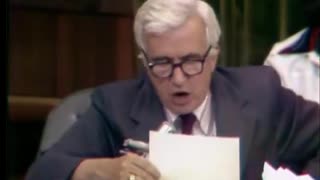 3:50:14
3:50:14
The Memory Hole
6 months agoNixon Impeachment Hearings Day 2 (1974-07-24)
1.15K -
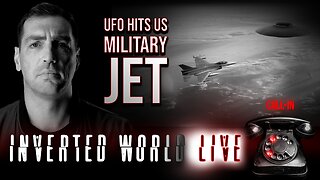 2:17:50
2:17:50
Inverted World Live
5 hours agoUFO Hits US Military Jet | Ep. 74
130K19 -

SpartakusLIVE
7 hours ago#1 Monday MOTIVATOR || Charity Stream Wednesday, The Gauntlet SOON, and 2v2s RETURN?!?!
45.6K -
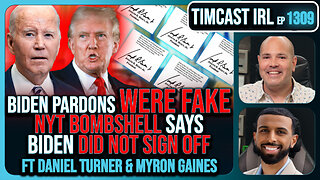 2:58:23
2:58:23
TimcastIRL
6 hours agoBiden Pardons WERE FAKE, NYT Report PROVES Trump WAS RIGHT, Fauci Faces Charges | Timcast IRL
250K84 -
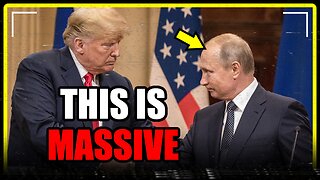 8:01
8:01
MattMorseTV
11 hours ago $5.66 earnedTrump just DROPPED a BOMBSHELL.
42.8K51 -
 LIVE
LIVE
Cancel This Podcast
6 hours ago $0.57 earnedROLE-PLAYING GRINDS: FINAL FANTASY XIV, DRAGON QUEST X & OCTOPATH COTC - CTP GAMING MONDAYS!
303 watching -
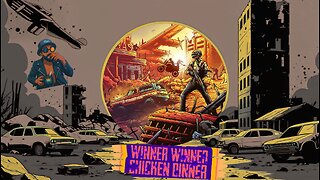 7:25:37
7:25:37
FoeDubb
7 hours ago🏰KINGDOM MENU :🎮LATE NITE PUBG 🤣MOST LIKELY A BAD IDEA DILLY DILLY!!!
11.2K -
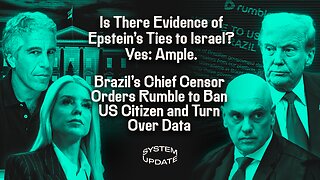 1:34:52
1:34:52
Glenn Greenwald
9 hours agoIs There Evidence of Epstein's Ties to Israel? Yes: Ample. Brazil's Chief Censor Orders Rumble to Ban US Citizen and Turn Over Data | SYSTEM UPDATE #486
151K130 -
 2:20:40
2:20:40
GamerGril
3 hours agoMarvel Rivals Monday | Battle Of The Bronze
10.6K3 -
 46:08
46:08
FanatikGaming
2 hours ago $0.71 earned💪Monday Motivation🦾 - Legends Never DIE!💯💯 ATWU - BTTB!☝️🔥
14.8K2